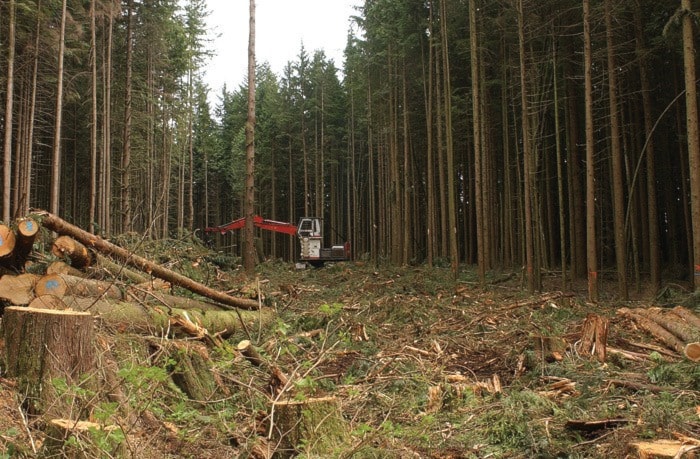One of the partners in the plan to put in a 79-acre gravel pit in north Maple Ridge, just east of 256th Street, has bailed on the project.
Katzie First Nation Chief Ed Pierre told Mayor Ernie Daykin the band is pulling out of the partnership with Canadian Aggregates Inc. to mine about 225,000 tonnes of gravel yearly, a project that could last for decades.
But according to Garnet Mierau, with Canadian Aggregates, the project is still going ahead.
“They’re not our partners anymore, but the project is still active.”
He said the company is technically still in a partnership with Katzie because it hasn’t yet received a letter. But the Katzie have told him they want out.
Mierau wouldn’t say if it will be more difficult to proceed or whether the company has to re-apply to the Integrated Land Management Bureau.
“The project is very viable. It’s there,” Mierau said.
Last year, the partnership applied for a Crown lease that would allow operation of the pit, which would have been located outside Maple Ridge boundaries.
Part of the proposal includes building a road that would run diagonally southeast from the pit, north of Kanaka Creek Regional Park, to 272nd Street, where it would connect to Dewdney Trunk Road.
Residents and interest groups had until last Jan. 31 to file their comments, after which an open house was to take place.
But there’s no date for that yet, Mierau said Tuesday.
The company is currently focusing on another project, he explained.
The Chilliwack forest district, part of the natural resources ministry, opposed the application because of the impact on existing woodlots – small, sustainable logging operations – on Blue Mountain.
Maple Ridge also sent in a letter stating its concerns, and asking for an environmental impact assessment, a traffic impact study and a report showing how the quarry would fit in with a Blue Mountain recreation strategy, which is intended allocate the mountain to various groups such as mountain bikers, motorcyclists, hikers and horseback riders.
Daykin said it could be a good time to sit down and discuss with the provincial government the future of Blue Mountain and the “highest and best use” of the land, which he says wouldn’t be a gravel quarry.
However, the district’s long-term plan allows gravel pits in the same general area, within municipal boundaries.
Meanwhile, another gravel pit proposal will go to council in September. Three owners (Donada Industries, Rae Glenn Industrial Development and Earl Bremner) of the property at 236th Street and 124th Avenue want to haul gravel from two lots that are about 37 acres in area.
The property is within the Agricultural Land Reserve and the owners have been told by the Agricultural Land Commission to apply to the District of Maple Ridge for non-farm use of the land.
The mining process will take about three years and remove about 400,000 cu. metres of gravel, after which top soil would be brought in and the land restored to agricultural use. Trucks would use 124th Avenue connecting to 232nd Street as the access point.
But the proposal bothers nearby resident Wendy Blatta, who lives on 236A Street and wants as many people as possible to attend the Sept. 10 committee of the whole meeting.
“This is obviously of interest to people to the north and south of the property,” she said Tuesday.
“This would be massive,” she added.
Blatta fears the disruption, dust and drop in property values from the gravel extraction and from trucks rumbling down the roads. The project also would require widening a driveway that crosses Coho Creek, which runs through the site.
David Laird, with Damax Consultants, said earlier there is no intent on developing the land for houses, which would require removal of the land from the Agricultural Land Reserve.
Daykin agreed Tuesday. “I don’t see that happening.”
